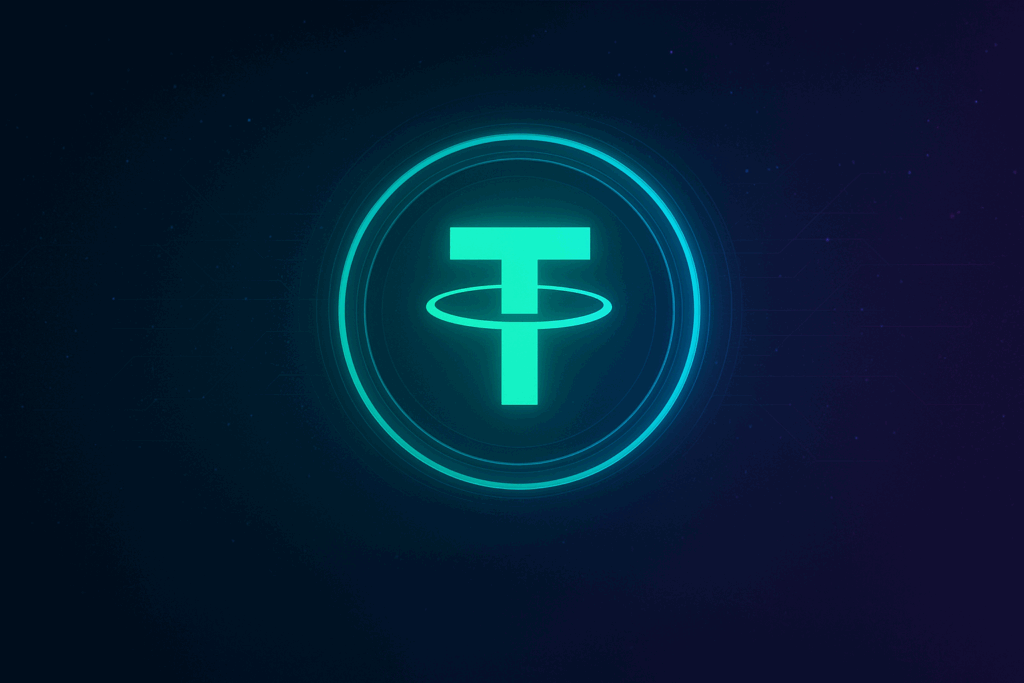
Key Takeaways
- Tether (USDT) keeps crypto trading stable, fast, and liquid.
- It’s not built to grow in price — it’s built to keep your value steady.
- Competing with USDC and DAI, Tether still leads in global use.
- Transparency, audits, and AI tools are key to its long-term trust.
- Tether’s mix of technology, compliance, and liquidity makes it a lasting pillar of digital finance.
Summary
Tether isn’t about profits — it’s about stability, liquidity, and trust. As the crypto market expands, USDT continues to serve as a dependable bridge between traditional finance and digital assets. Its long-term strength will rely on how effectively it maintains transparency, embraces innovation, and meets global compliance standards — ensuring the crypto economy runs smoothly and securely.
In the fast-paced world of cryptocurrency, stability is often seen as a luxury. While assets like Bitcoin and Ethereum capture attention for their dramatic price swings, stablecoins have quietly established themselves as essential components of the digital financial ecosystem. Among these, Tether (USDT) stands out as the most traded and widely adopted stablecoin, serving as a vital link between traditional finance and blockchain-based markets.
For traders and investors looking for a dependable store of value, Tether offers a practical alternative to the unpredictable nature of other cryptocurrencies. Whether you are managing liquidity, hedging against volatility, or simply ready to exchange USDT ERC20, understanding its strengths, risks, and long-term potential is crucial.
This article explores whether Tether can truly be considered a good investment, its role in the digital economy, and how it compares to other stablecoins as crypto finance continues to evolve.
Understanding Tether USD Coin
Tether is a stablecoin pegged to the US dollar at a 1:1 ratio. Each token is backed by reserves that include cash, equivalents, and short-term securities held by Tether Limited. Its goal is simple: provide price stability in an otherwise volatile market.
Get exclusive access to all things tech-savvy, and be the first to receive
the latest updates directly in your inbox.
Unlike cryptocurrencies driven purely by supply and demand, Tether’s design ensures it stays close to one dollar. This makes it an essential tool for traders who want to avoid volatility without leaving the crypto space entirely.
Tether operates on multiple blockchains — Ethereum, Tron, Solana, and others — making it one of the most liquid digital assets in existence. Its multi-chain presence means users can transfer value quickly, often with minimal fees, across different blockchain networks and exchanges.
However, the stability of Tether ultimately depends on transparency — particularly, whether its reserves can consistently support the number of tokens in circulation. Regulators and investors continue to demand more detailed audits and disclosures to ensure confidence in its peg.
Why Investors Use Tether

Liquidity and Accessibility
One of Tether’s main strengths is its unmatched liquidity. It is integrated across nearly every major exchange and wallet, allowing funds to move between platforms almost instantly. For professional traders, this feature reduces settlement delays and helps execute arbitrage opportunities efficiently.
Hedging Against Volatility
During market uncertainty, many investors convert volatile assets into Tether to preserve value. When Bitcoin or Ethereum prices drop sharply, holding USDT allows investors to “sit out” downturns without converting back to traditional currency. At the same time, many traders use this period to rebalance their portfolios, shifting part of their holdings into other assets through smooth transitions like switching from USDT to ETH when market conditions become favorable again
Role in DeFi and Payments
Tether plays an important role in decentralized finance (DeFi) as a stable collateral asset. It’s used for lending, staking, and yield farming, providing predictable returns while minimizing exposure to volatility. Moreover, businesses around the world are increasingly using Tether for cross-border payments, taking advantage of blockchain’s speed while avoiding crypto price swings.
In essence, Tether is not just another token — it acts as the infrastructure that keeps liquidity moving throughout the crypto economy.
Comparing Tether to Other Stablecoins
To determine whether Tether is a good investment, it’s essential to examine how it compares with its closest peers — USD Coin (USDC) and DAI.
USDC, issued by Circle and supported by regularly audited reserves, has built a reputation for exceptional transparency, compliance, and regulatory oversight. This strong emphasis on accountability makes it particularly attractive to institutional and corporate investors who need confidence in the legitimacy and backing of their digital assets. Its strong relationship with traditional finance has also positioned it as one of the most trusted stablecoins in regulated environments.
DAI, by contrast, operates within the MakerDAO ecosystem and represents a fully decentralized alternative. It maintains its dollar peg through overcollateralization of crypto assets like ETH rather than relying on a central entity. This structure appeals to users who value autonomy, censorship resistance, and on-chain governance.

While Tether still leads the stablecoin market in both trading volume and liquidity, the growing emphasis on transparency and regulation from its competitors keeps it under constant pressure. Ultimately, the choice among these stablecoins depends on user priorities — Tether for liquidity and accessibility, USDC for compliance and trust, and DAI for decentralization and independence.
Transparency and Regulatory Outlook
Tether’s growth has not come without controversy. Over the years, the company has faced scrutiny over its reserves and audit practices. In 2021, Tether Limited reached a settlement with the New York Attorney General concerning previous statements about its reserve composition. Since then, Tether has increased disclosure frequency and adjusted its asset mix, reducing exposure to commercial paper and increasing U.S. Treasury holdings.
The broader stablecoin market is also facing rising regulatory attention. Governments are now developing frameworks to safeguard users and ensure financial stability. These changes could increase costs for issuers but might also strengthen confidence in stablecoins overall.
Maintaining strong operational and cybersecurity measures is equally critical for investors. Implementing robust cybersecurity measures when investing in crypto can help protect digital wallets, private keys, and trading accounts from phishing or data breaches — a growing concern as more users adopt digital assets.
Transparency and compliance will likely define which stablecoins thrive long-term. Tether’s ability to adapt to global regulations will determine whether it maintains its dominant role in crypto markets.
The Role of Technology and AI in Stablecoin Management
As the industry matures, technological tools including artificial intelligence are playing a growing role in monitoring and governance. AI systems help analyze transaction flows, detect anomalies, and automate compliance reporting — capabilities that can increase trust in reserve management.
Modern automation and AI tools for DevOps are also being adapted to blockchain operations, enabling faster incident response and smarter infrastructure scaling. Applied to stablecoins, these technologies can improve reserve transparency, enhance fraud detection, and streamline audit processes.
Technological adoption will play a major role in Tether’s competitiveness. The stablecoins that embrace automation, real-time auditing, and intelligent reserve management will likely earn stronger trust from both regulators and investors.
Investment Scenarios and Use Cases
Tether is not a traditional investment vehicle that grows in value — its price intentionally stays near $1. However, it can serve several strategic purposes within a diversified portfolio:
- Capital preservation during market volatility.
- Liquidity management for traders moving funds between exchanges or assets.
- Yield generation through lending and staking in DeFi protocols.
In emerging markets, where national currencies can fluctuate sharply, Tether acts as a hedge against inflation and devaluation. Individuals in countries with unstable economies use USDT as a practical digital dollar — an accessible way to protect purchasing power.
Operational security remains a key factor in such strategies. As automation grows, it’s increasingly important to maintain system integrity and detect manipulated or synthetic data. Ensuring data authenticity and preventing manipulation are essential for secure automation — values that align closely with blockchain’s core principles of transparency and trust.
By combining financial prudence with technological resilience, investors and businesses can better navigate the evolving landscape of digital assets.
Price Prediction and Market Outlook
Because Tether is pegged to the U.S. dollar, predicting its price is straightforward — it should remain around $1 under normal conditions. However, what’s more interesting is its market outlook, particularly in relation to adoption, regulation, and innovation.
- Market Demand — As crypto adoption continues to expand globally, the demand for stable and liquid assets like USDT is expected to increase. Tether’s dominance in trading pairs ensures it remains central to crypto liquidity.
- Regulatory Clarity — Clearer regulations can either strengthen investor confidence or limit flexibility for issuers. Compliance could improve long-term trust in stablecoins while weeding out weaker competitors.
- Technological Innovation — AI-enhanced auditing tools and blockchain transparency initiatives could make Tether more reliable and efficient.
While Tether is unlikely to “rise” like Bitcoin or Ethereum, its continued utility and liquidity position it as a key player in crypto finance. Analysts expect the demand for stablecoins to grow steadily as decentralized finance, cross-border payments, and digital commerce expand globally.
Risks to Consider
Despite its widespread use, Tether is not without risk.
- Counterparty Risk — Since Tether is issued by a private company, its stability depends on the issuer’s solvency and governance.
- Regulatory Pressure — Global policymakers could impose restrictions on stablecoins or require stricter transparency standards.
- Competition — Central Bank Digital Currencies (CBDCs) and fully audited alternatives could challenge Tether’s dominance.
Diversification remains a key principle for all investors. Even stablecoins can be affected by systemic risk, so holding multiple assets or using multiple platforms is recommended.

Conclusion
Tether (USDT) isn’t meant to make a profit, but it helps keep money moving in the cryptocurrency world. It’s strong because it’s easy to get, stable, and makes trading and DeFi easier.
For keeping money for a short time, balancing your investments, and making payments around the world, Tether is very helpful. But, investors need to know about changes in rules, problems with openness, and new technologies that could affect its future.
As the crypto market gets more mature, stablecoins that have strong reserves, good management, and smart automation will get the most trust. How well Tether keeps changing – by balancing openness, technology, and being able to adapt – will decide its place in the future of digital money.
In the end, Tether is still a reliable way to keep your money stable – a digital version of the U.S. dollar that supports much of today’s blockchain economy.


